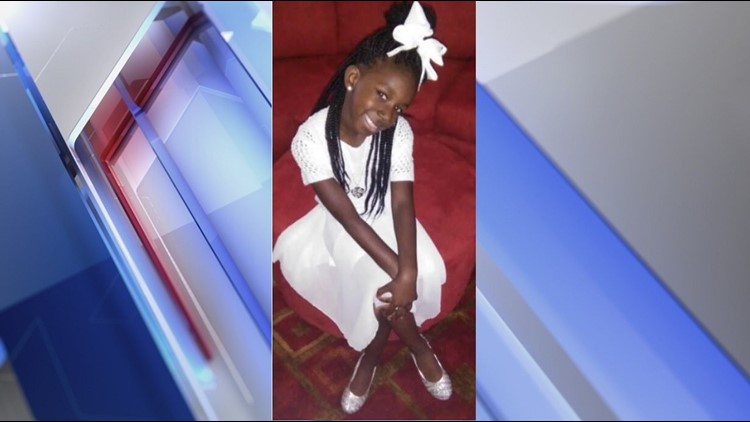South Carolina fifth-grader Raniya Wright — the girl who died last month after a fight at her elementary school — died of a blood-vessel rupture in the brain stemming from a birth defect, and there’s no evidence the fight contributed to her death, a prosecutor said Friday.
The death of Raniya, 10, will be attributed to natural causes in a report next week, and no criminal charges will be filed in the case, district solicitor Duffie Stone told reporters Friday.
“There was no evidence of trauma on or inside the body of Raniya Wright that would indicate that any fight in any magnitude contributed to her death,” Stone said at a news conference, announcing the initial results of the investigation into the young girl’s death.
Stone said he made the determination after pathologists and other doctors conducted postmortem tests at the Medical University of South Carolina, where Raniya died March 27.
Raniya was involved in a “five- to 10-second slap fight” with another student in a classroom at Forest Hills Elementary in Walterboro on March 25, and a teacher separated them, Colleton County Sheriff R.A. Strickland said Friday. Raniya had no sign of and spoke of no injury, but complained of a headache about 10 minutes later at the principal’s office, he said.
Authorities have said she then lost consciousness, and medics took her to a local hospital. She later was transferred to the Medical University of South Carolina in Charleston, where she died.
Colleton County School District Superintendent Franklin Foster said the Wright family had their deepest sympathies.
He told reporters Friday that officials found that district employees acted appropriately and safety procedures were followed during Raniya’s medical emergency.
Raniya’s birth defect caused headaches for months, prosecutor says
Raniya’s brain had an “arteriovenous malformation,” or AVM — a tangling of vessels connecting arteries and veins, Stone said.
The condition disrupts normal blood flow, meaning surrounding tissues may not get enough oxygen, and affected vessels can rupture, the Mayo Clinic says.
It apparently caused headaches that the girl recently sought treatment for; the rupture was ready to take place “just about any time,” and the “fight did not have anything to do with her passing away,” Stone said.
Stone said Raniya had visited a doctor at least six times relating to headaches since February 2017, including 13 days before the fight.
“The headaches are a manifestation” of the condition, he said, adding: “It was a matter of time.”
Margie Pizarro, an attorney for Raniya’s mother, Ashley Wright, said the family didn’t know about the girl’s condition.
Wright said on the morning of the fight her daughter was in good spirits and didn’t complain about a headache.
When reporters asked whether the fight could have affected her condition, including whether stress led to the rupture, Stone said: “They (pathologists and others who examined Raniya) had no signs whatsoever that the fight had anything to do with it.”
Every year, about four in 100 people with an AVM will have a hemorrhage, the American Association of Neurological Surgeons says. Each hemorrhage poses a 15% to 20% risk of death or stroke, the association says.
Investigators appear at odds with Raniya’s mother over students’ histories
Authorities appear to be at odds with what Raniya’s family has been saying about what led to the March 25 fight and the degree to which the students had been antagonistic previously.
“Petty children’s things” appeared to lead to the slap fight in the classroom, sheriff’s Maj. Jason Chapman said at the news conference.
Chapman cited interviews with students — including a statement from Raniya sometime before she died. Chapman didn’t say when Raniya’s statement was taken.
“It did not appear to be anything that transpired prior to that date or anything that had grown” from a previous incident, Chapman said. “Speaking with teachers, there’s not any (other) documented incidents” between the two children.
But speaking to “Good Morning America” earlier this month, Ashley Wright said Raniya’s friends told her that a bully had been baiting the 10-year-old into a fight and caused her to hit her head on a bookshelf before she died.
She said Friday that she called Raniya’s teachers numerous times about the one girl who was bullying Raniya, beginning in third grade.
The superintendent said there were no indications that Raniya’s mother spoke to school staff to impart concerns about bullying.
The other student will finish the school year in an alternative learning setting not on campus, Foster added.
Stone, the prosecutor, said he met with Raniya’s family Friday morning and explained his office’s findings before he announced them at the news conference.
Pediatrician: It would be unusual for a such a fight to cause an AVM rupture
It would be unusual for a brief fight — especially one leading to no external injuries — to cause the kind of stress that would lead to an AVM rupture, said Dr. Edith Bracho-Sanchez, a practicing general pediatrician and Stanford Global Health and Media fellow at CNN.
“It would really need an increase in blood flow, an increase in blood pressure, in a really strong way to lead to a rupture,” Bracho-Sanchez, who was not involved in Raniya’s care, said in an interview Friday.
More likely, she said, the AVM had simply grown progressively, leading to the rupture.
Bracho-Sanchez said that in children she’s seen with AVM, the condition was found only when brain scans were conducted for other reasons.
“The symptoms of AVMs are often symptoms that a lot of kids have — symptoms of minor illnesses such as headaches,” she said. “It’s a tough thing to diagnose, because the symptoms are … common with other conditions.”



